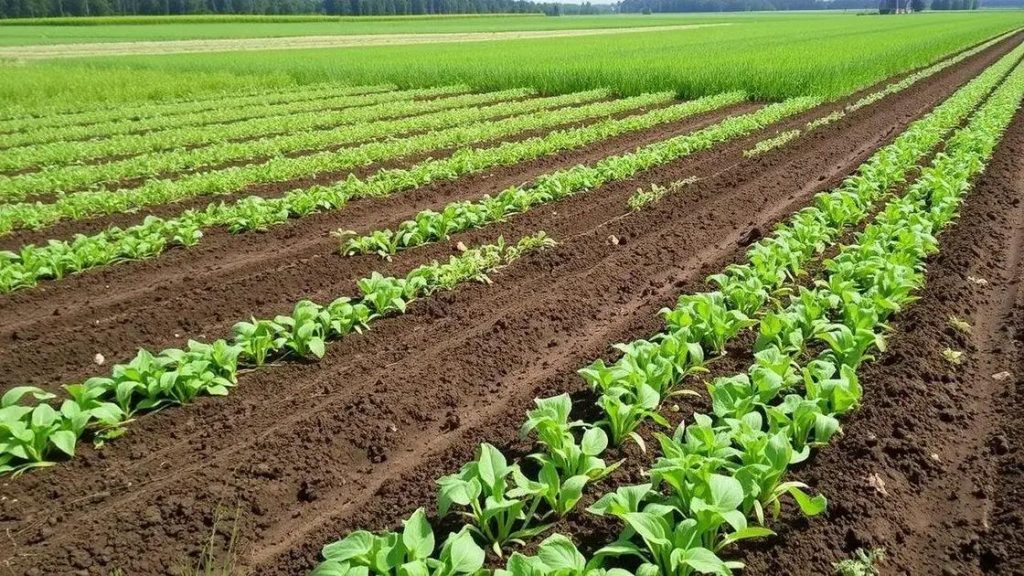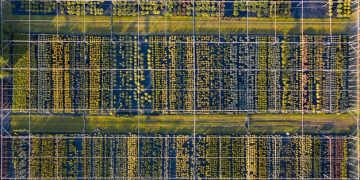Cover cropping techniques for soil regeneration

Cover cropping techniques for soil regeneration involve using specific plants to improve soil health, enhance nutrient cycling, prevent erosion, and boost overall agricultural productivity.
Are you aware that cover cropping techniques for soil regeneration can significantly boost your soil health? These methods not only enrich the earth but can also lead to better agricultural outcomes. Let’s dive into how they work!
Understanding cover cropping techniques
Understanding cover cropping techniques is essential for improving soil health and productivity. These methods utilize specific crops to protect and enrich the soil, ultimately leading to sustainable farming practices. By implementing these techniques, farmers can enhance nutrient availability and improve soil structure.
What are cover crops?
Cover crops are plants grown primarily for soil management rather than for harvest. They serve multiple purposes, such as preventing erosion, suppressing weeds, and enhancing organic matter. Each type of cover crop brings unique benefits to the soil.
Common types of cover crops
- Legumes: These crops, like clover and vetch, fix nitrogen in the soil, making it more fertile.
- Grasses: Species like rye and oats can improve soil structure and prevent erosion.
- Brassicas: Plants such as radish help break compacted soil and improve drainage.
In addition to these benefits, cover crops can enhance biodiversity on the farm, providing habitat for beneficial insects and improving overall ecosystem health. The choice of cover crop depends on your specific goals and the local climate.
Implementing cover cropping techniques during the off-season can significantly influence your soil’s performance in future cropping seasons. Cover crops can absorb excess nutrients, reducing runoff and pollution. They help retain moisture, ensuring better resilience to drought.
Implementing cover crop systems
Choosing the right time to plant is crucial. Typically, cover crops should be sown before the main cash crop is harvested. This timely planting maximizes their benefits.
- Follow your region’s climate patterns for planting schedules.
- Consider the growth cycle of your cash crops for effective rotations.
- Monitor soil conditions regularly to adjust management practices.
Engaging in these methods not only benefits the soil but also can lead to reduced input costs over time. As farmers witness improved yields and soil quality, they discover a balance that promotes sustainability in agriculture.
Key benefits of cover crops for soil health

The key benefits of cover crops for soil health are numerous and impactful. Planting cover crops can help improve soil structure and fertility, while also enhancing ecosystem functions. These practices can lead to healthier plants and higher crop yields.
Improved Soil Structure
Cover crops, such as legumes and grasses, add organic matter to the soil. This organic matter creates a network of pores that improves aeration and water infiltration. When soil is well-structured, it becomes more resilient to erosion and compaction.
Nutrient Cycling
One of the primary advantages of using cover crops is their role in nutrient cycling. For example, legumes can fix nitrogen from the atmosphere, enriching the soil with this vital nutrient. When these plants decompose, they release nutrients back into the soil, promoting healthy crop growth.
- Enhanced nutrient availability: Crops benefit from improved nitrogen levels.
- Reduced fertilizer costs: Farmers can rely less on chemical fertilizers.
- Biodiversity boosts: Diverse cover crops enhance microbial life.
Moreover, the presence of cover crops supports beneficial microorganisms in the soil. These organisms play a critical role in breaking down organic matter and improving nutrient availability. The interaction between plant roots and soil microorganisms can lead to healthier agricultural systems.
Cover crops also play a vital role in preventing soil erosion. Their roots bind the soil together, reducing runoff and helping to maintain topsoil integrity. This is crucial for maintaining productive land, especially in regions prone to heavy rainfall.
Moisture Retention
Another significant benefit of cover crops is their ability to retain moisture in the soil. During dry periods, these crops can keep the soil moist and prevent drought stress for subsequent crops. The canopy created by cover crops protects the soil from evaporation.
- Improved water retention: Helps maintain soil moisture levels.
- Reduced irrigation needs: Cuts down on water usage in farming.
- Increased resilience: Provides plants with a buffer during dry spells.
In summary, incorporating cover crops into farming practices not only enhances soil health but also supports sustainable agricultural systems. Their diverse benefits can lead to improved productivity, environmental health, and a more resilient farming landscape.
Best practices for implementing cover crops
Implementing cover crops effectively requires understanding best practices for implementing cover crops. These practices ensure that farmers and gardeners maximize the benefits of cover cropping while minimizing challenges.
Selecting the Right Cover Crop
Choosing the right cover crop is crucial for success. Factors such as your climate, soil type, and main crop should guide your selection. Different cover crops serve different purposes; for instance, legumes are great for nitrogen fixation, while grasses improve soil structure.
Timing Your Planting
Your timing for planting cover crops can significantly impact their performance. Generally, cover crops should be sown before the main cash crop is harvested or at the beginning of fall. This ensures they establish a strong root system before winter.
- Optimal sowing time: Plan for 4-6 weeks before the first expected frost.
- Monitoring growth: Keep track of their development to ensure they reach sufficient biomass.
- Termination strategies: Decide whether to till, mow, or use herbicides before planting the main crop.
Another important aspect is to allow cover crops to grow to a suitable height. Taller growth can help suppress weeds and enhance soil structure through root development. Additionally, mixing different cover crops can create a more diverse environment that benefits the soil.
Managing Soil Health
Regular soil testing before and after implementing cover crops can provide insights into nutrient levels and overall health. Understanding your soil’s needs is vital for applying appropriate amendments and ensuring a successful crop rotation.
- Soil amendments: Apply organic matter as needed based on test results.
- Crop rotation: Pair cover crops with a strategic rotation to prevent nutrient depletion.
- Monitoring soil moisture: Evaluate moisture levels and adjust your irrigation accordingly.
It’s also advisable to keep records of your cover cropping practices. Documentation helps track which combinations work best over time, allowing for continuous improvement. Engaging with local agricultural extensions or community groups can provide additional resources and support.
Common mistakes when utilizing cover crops

Understanding the common mistakes when utilizing cover crops is key to achieving the desired benefits. Many farmers and gardeners struggle with these practices due to misunderstandings or lack of preparation.
Neglecting Soil Testing
One major error is failing to conduct soil tests before planting cover crops. Knowing the nutrient status of the soil helps in selecting the right cover crop for specific needs. Without this information, you may end up with crops that do not effectively address soil deficiencies.
Improper Timing
Another frequent mistake is planting cover crops at the wrong time. Timing is critical for maximizing their growth and benefits. If sowing occurs too late in the season, the crop may not establish properly before winter.
- Follow climate guidelines: Know your region’s frost dates.
- Monitor weather conditions: Ensure suitable moisture and temperature for sowing.
- Avoid delay: Don’t wait until just before cash crop planting.
Also, many people underestimate the importance of managing cover crops after planting. Not terminating cover crops at the right time can lead to competition for nutrients and water, negatively impacting the main crop.
Choosing Inappropriate Varieties
Selecting the wrong varieties of cover crops can also be detrimental. Each type of cover crop offers unique benefits, and failing to understand these can lead to less-than-optimal results. For instance, using a grass cover crop in place of a legume means missing out on nitrogen fixation.
- Research cover crop benefits: Understand what each crop can contribute.
- Consider local conditions: Match cover crops to your specific soil and climate.
- Avoid monocultures: Mixing different species can enhance benefits.
Finally, insufficient record-keeping can hinder improvement. Failing to track which cover crops worked or did not work in previous seasons can lead to repeated mistakes. Keeping logs helps in refining practices and improving soil health over time.
FAQ – Common Questions About Cover Crops
What are cover crops?
Cover crops are plants grown specifically to improve soil health, prevent erosion, and enhance nutrient levels, rather than for harvest.
How do cover crops improve soil health?
They add organic matter, prevent erosion, suppress weeds, and can fix nitrogen in the soil, leading to improved fertility.
What are some common mistakes when using cover crops?
Common mistakes include poor timing, choosing the wrong varieties, neglecting soil tests, and failing to terminate at the right time.
How can I determine the best cover crops for my area?
Consider your local climate, soil type, and specific goals. Conducting soil tests will also help in selecting the right crops.





